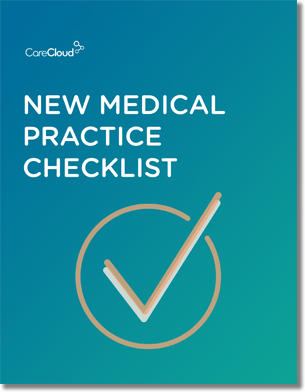With Meaningful Use Stage 2 only three months away, federal and state health agencies are scrambling to promote stronger health information exchanges (HIE) between physicians in light of the January 1, 2014 deadline.
In response to Stage 2 and the Affordable Care Act’s upcoming interoperability payment reforms, HHS has developed a strategy that highlights the ways the agency will further advance HIE beyond the current Meaningful Use and ONC certification programs.
These efforts include making sure that most electronic health records (EHRs) include Direct messaging capability and that health information service providers (HISPs) are widespread and can easily communicate with each other.
The Direct Project
Directed, or point-to-point, HIEs rely on the Direct Project secure messaging protocol, which was created by a government funded public-private partnership in 2010.
Any EHR seeking certification under Meaningful Use Stage 2 criteria must include Direct capability. This function is supposed to allow professionals and hospitals to meet the MU requirement regarding the exchange of clinical summaries among providers at transition points of care.
But the Direct Project likely won’t be enough make the government’s dream of complete healthcare interconnectivity a reality.
Interoperability and Data Ownership
Ideally, any provider in any part of the country could access a patient’s updated electronic medical record at any time. But due to interoperability issues between disparate EHR vendors and competing medical practices, this is not always the case.
Interoperability allows for better workflows, reduced ambiguity and improves the quality of care by making the right data available at the right time to the right doctor. Unfortunately, the architecture needed to make it possible for different EHR systems to exchange information between providers isn’t up to par yet.
According to H. Stephen Lieber, CEO of Healthcare Information and Management Systems Society (HIMSS), one of the biggest barriers still standing in the way of widespread interoperability is data ownership.
As it stands, some providers are hesitant to share their patient’s data because they want to maintain a competitive edge. Moving forward, the government has to foster a shift in mindset that persuades providers to give up medical information, which ultimately belongs to the patient.
But the reason some providers still reject this notion is because federal payment models don’t encourage HIEs.
Payment Reform
Even though the U.S. has already spent more than half the $22.5 billion earmarked for automating medical records, progress toward creating a manageable, interoperable system that works for patients and doctors has been painfully slow.
The government could, however, facilitate the process by creating an interoperability standard for physicians. The payment system would be simple: If your system plays well with others, you get paid. Otherwise, you don’t.
If Medicare reimbursements were to mirror a policy of data exchange, a more fluid exchange of information could evolve.
The government needs to start including digital HIEs in all future Medicare payment models. Because once Medicare heads down the path of modifying payment patterns, commercial insurers will follow.
Other suggestions:
- Include long-term care, post-acute care and behavioral health providers in CMS’s state innovation model grants
- Extend Meaningful Use incentives to long-term, post-acute and behavioral health providers
- Create reimbursement codes for care coordination enabled by telehealth and digital consults, radiology queries, and E&M services
- Extend legal exemptions for hospital EMR donations to physicians under the Stark Law and Anti-Kickback Statute
EHR Incentive Program
Finally, CMS must continue encouraging technology adoption among health providers through the EHR Incentive Program. But their efforts would benefit by increasing the focus on cloud technologies.
Cloud-based EHRs offer several solutions to physicians in need of charting software that addresses the data resource challenges faced by healthcare organizations today.
A quality, cloud-based EHR can securely transfer patient information, which increases collaboration between providers and leads to better patient care. Some cloud-based systems also come equipped with a patient portal, so physicians can meaningfully interact with patients, even after they leave the office.
By shifting federal policy to address patient data ownership issues, eliminate unsuccessful payment models and promote more cloud-based EHR adoptions, HHS could potentially help connect providers across the nation into one, unified network of information.

Do you know what you need when setting up a new medical practice?



